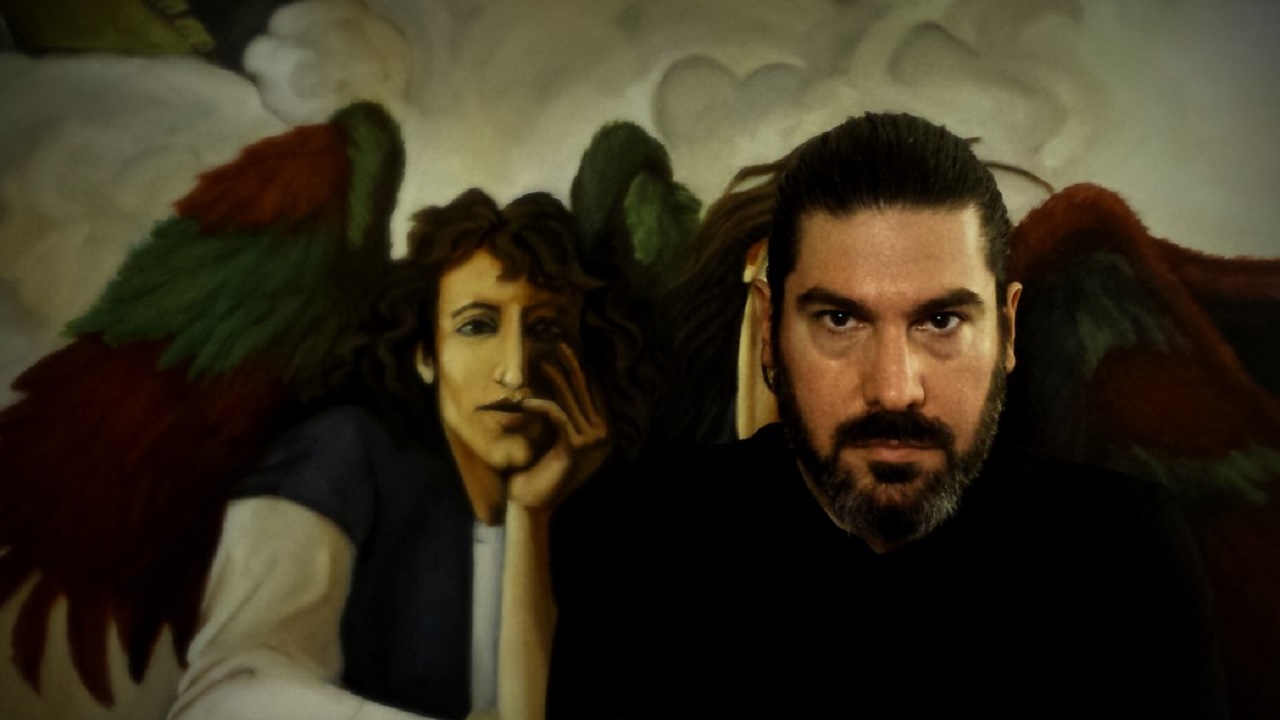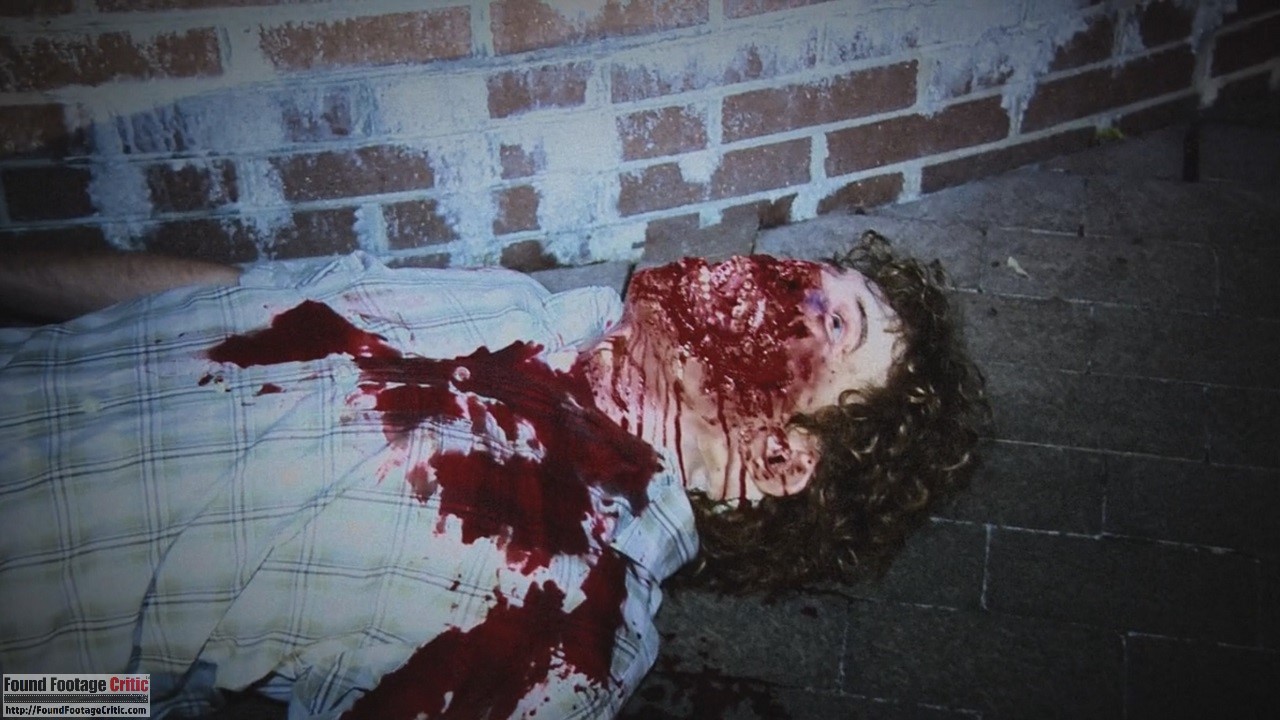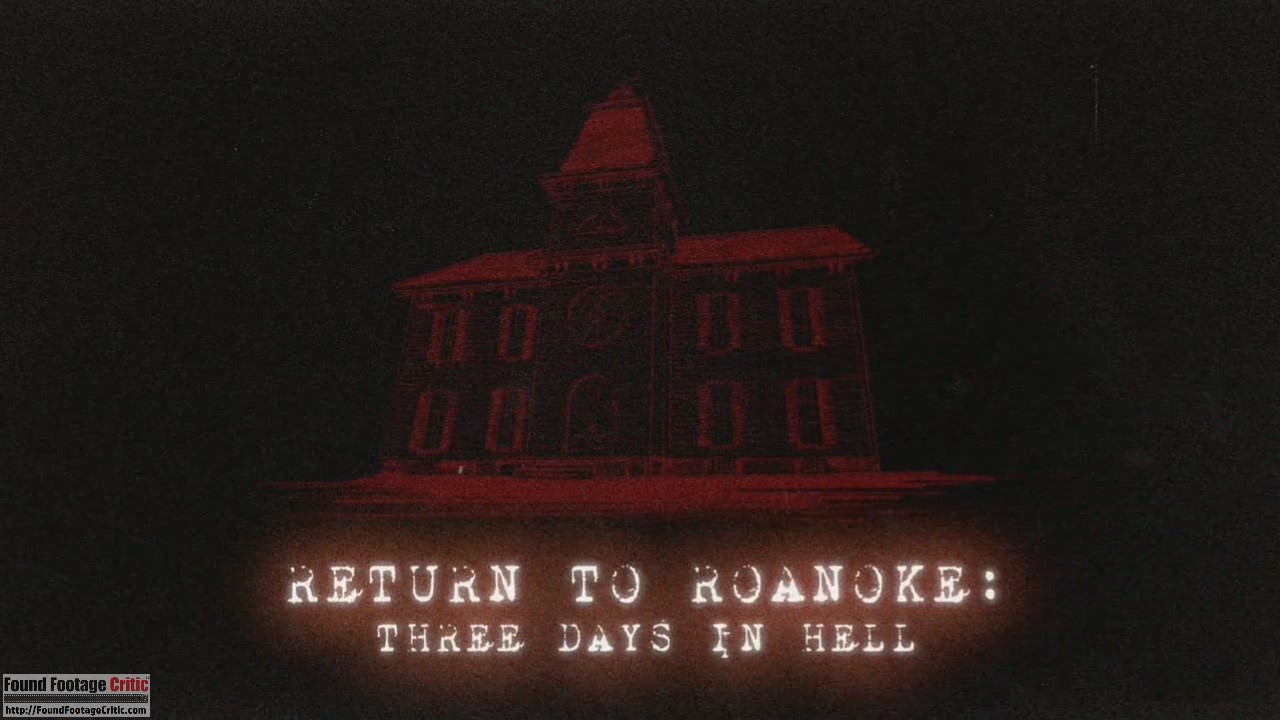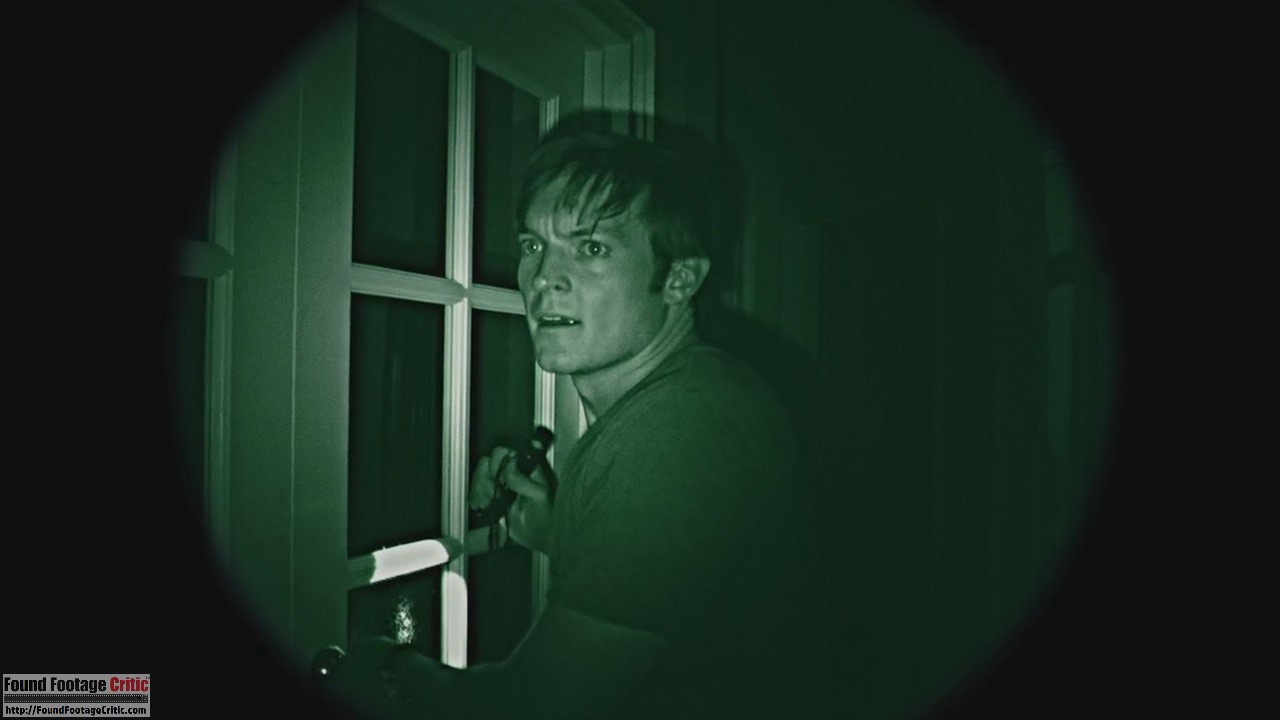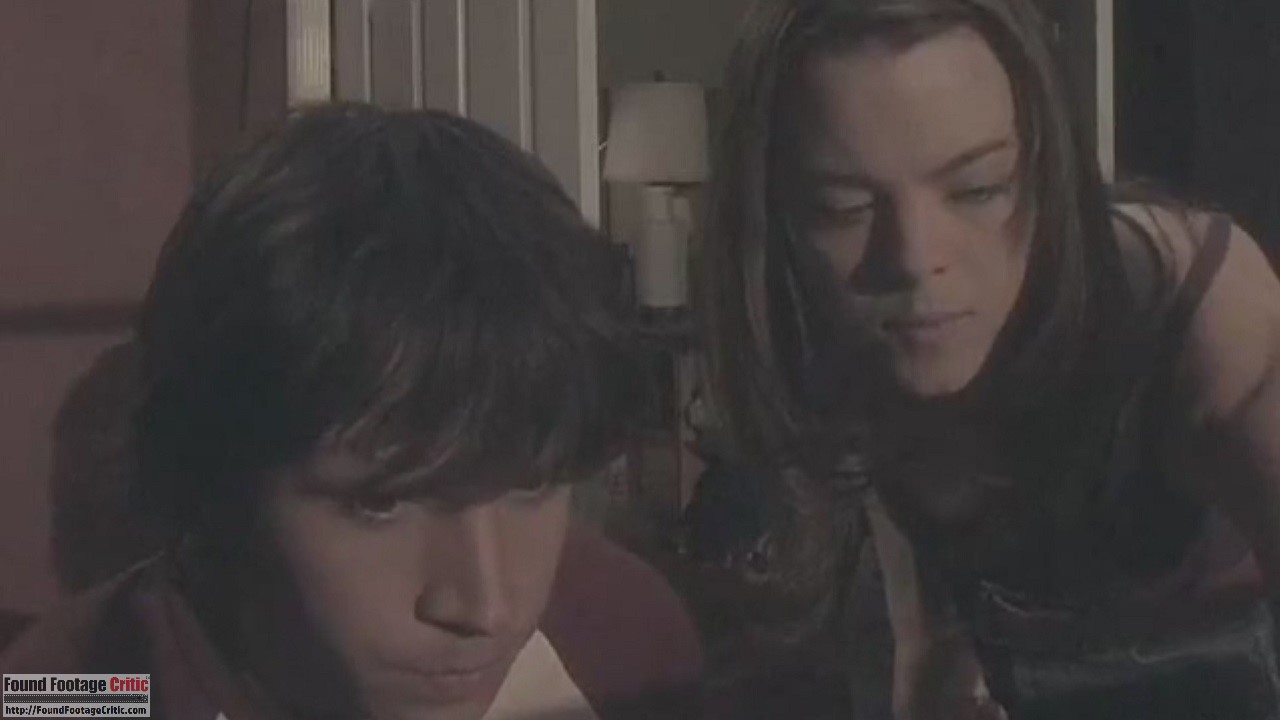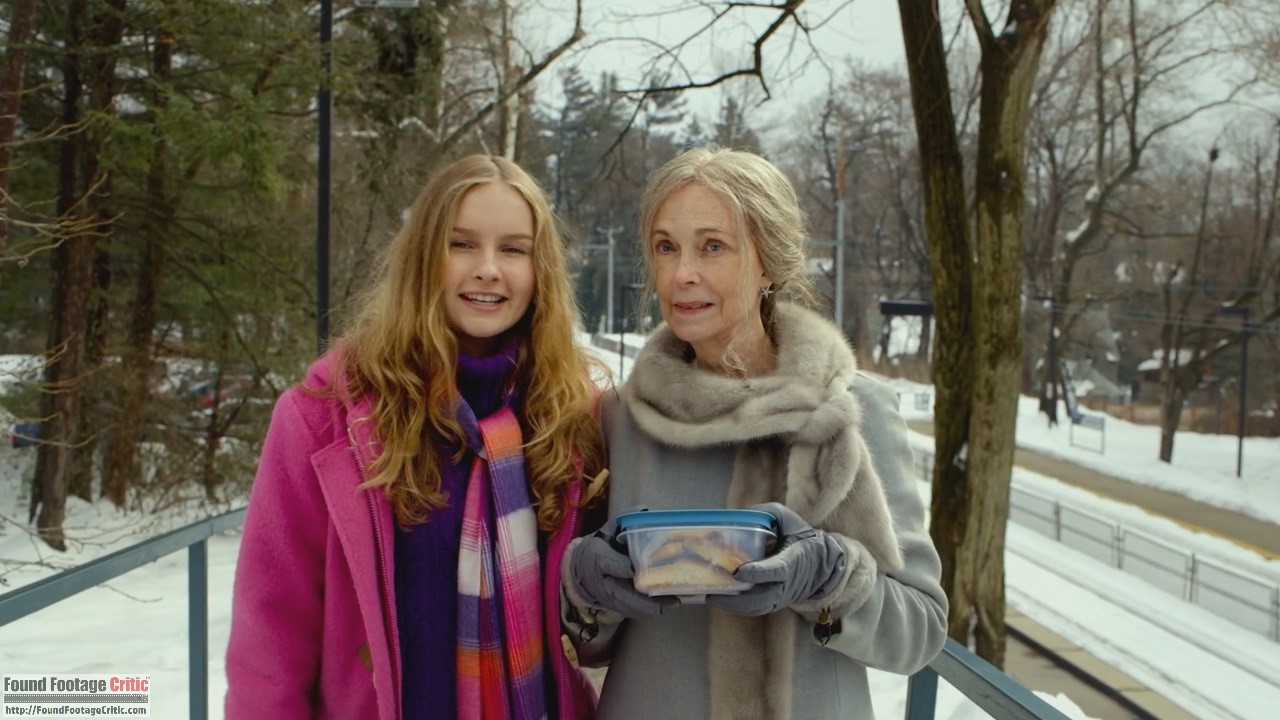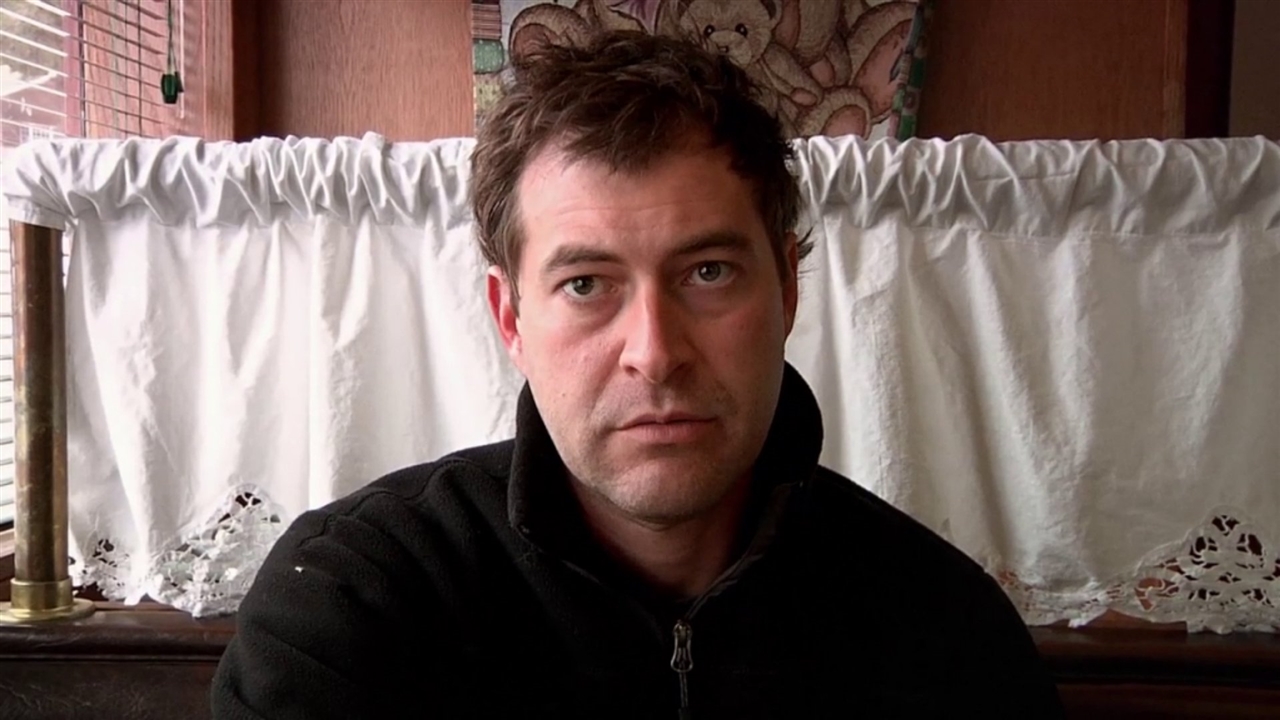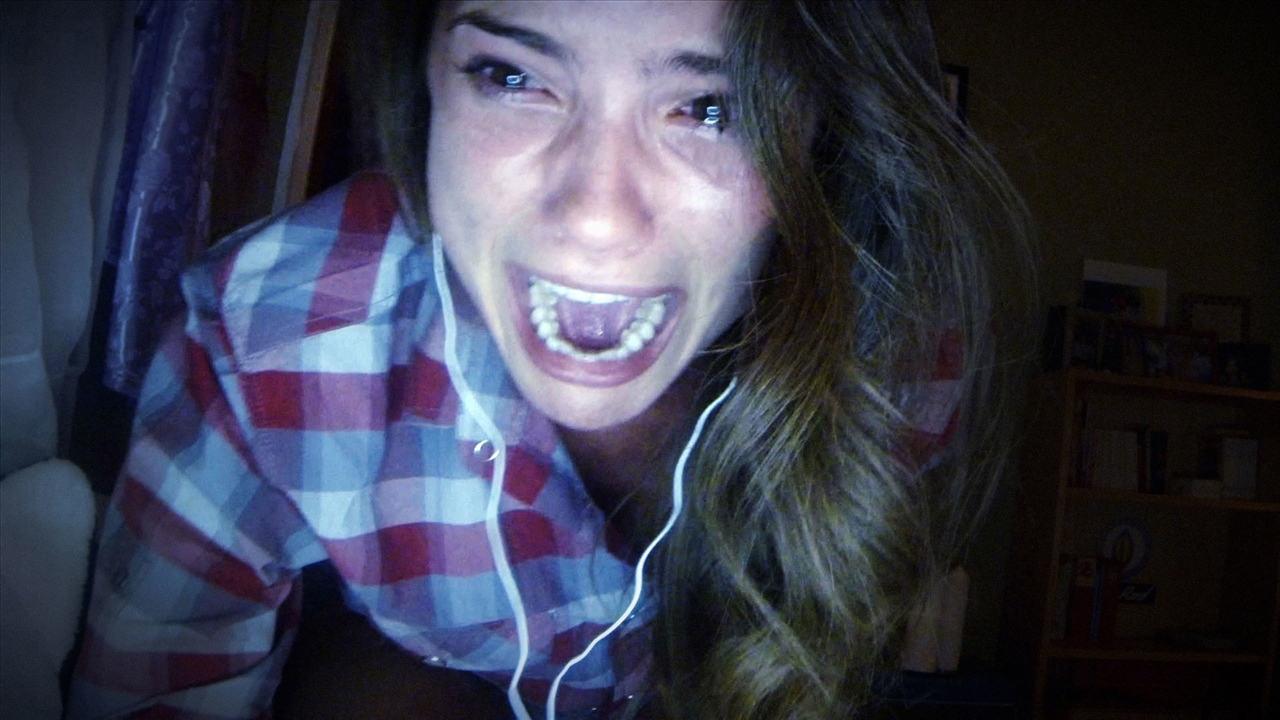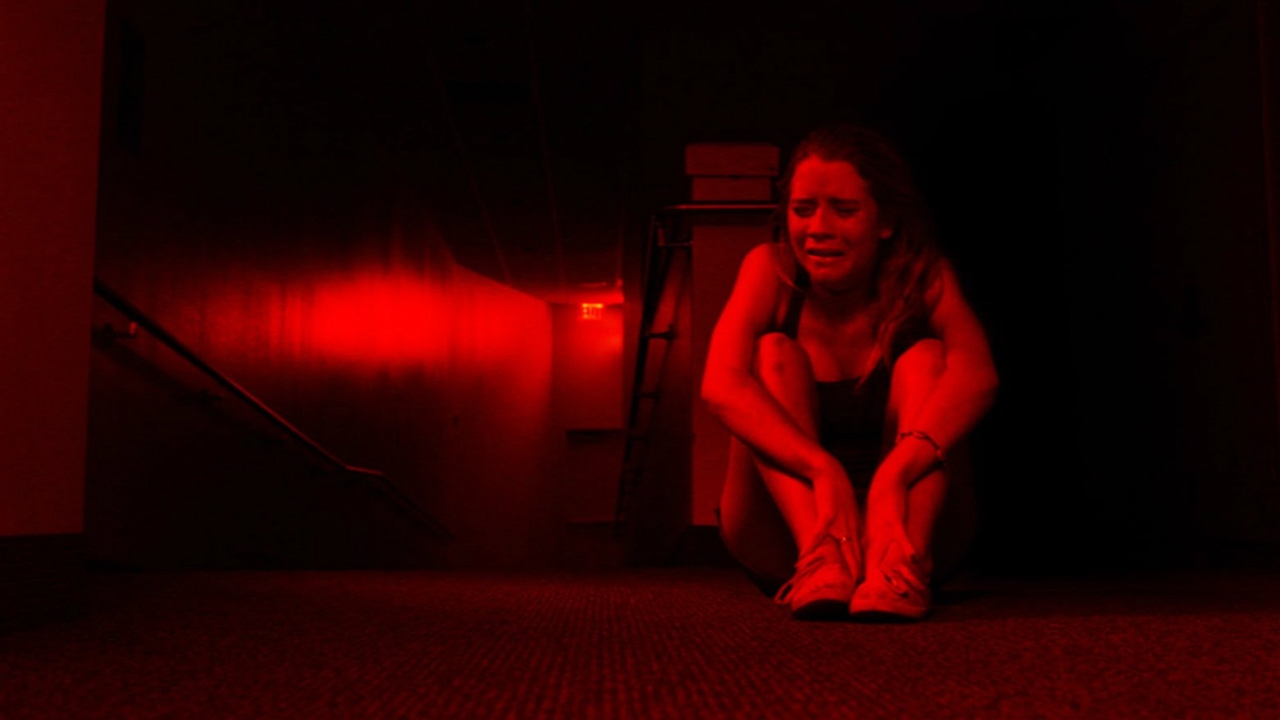 Would you like to get a glimpse into the world of Blumhouse? If the answer is “yes” then keep reading! We had the privilege of interviewing Gregory Burkart, Senior Staff writer at Blumhouse.com. Gregory is a full-time content writer for Blumhouse.com with over 20 years of industry experience and an avid proponent of the found footage genre. With over 14 found footage films in their catalog, Blumhouse is a driving force that helped define what the genre is today.
Would you like to get a glimpse into the world of Blumhouse? If the answer is “yes” then keep reading! We had the privilege of interviewing Gregory Burkart, Senior Staff writer at Blumhouse.com. Gregory is a full-time content writer for Blumhouse.com with over 20 years of industry experience and an avid proponent of the found footage genre. With over 14 found footage films in their catalog, Blumhouse is a driving force that helped define what the genre is today.
Gregory recently joined us as a guest co-host on Found Footage Files episode #87, where we reviewed Sara Adina Smith’s found footage film horror/drama Midnight Swim (2015).
While we had Gregory’s undivided attention, we took the opportunity to interview him about his work at Blumhouse and discuss the future of horror and found footage. He also offers a rare glimpse into the inner workings of Blumhouse Tilt and parent company Blumhouse.
Blumhouse.com’s Place in the Blumhouse Universe
FFC (MS): How did you come to work for Blumhouse?
Gregory Burkart: I used to be in a very similar position at the late great FEARnet which as you probably know was not only a channel but also was a very successful horror website—for general horror news, industry news, as well as creepy stories and so forth. When FEARnet went under it scattered a lot of its editorial people to the four winds.
Fortunately, Jason Blum and some of his cohorts over at Blumhouse decided they needed to relaunch their website to be more than just a platform for promoting Blumhouse Productions. They wanted to present Blumhouse as a horror authority.
Jason Blum made some tremendous forward movements, as an industry model, not just in horror, but in general
So many sites that will tell you about the latest horror movies that are coming and TV shows and whatnot. Once FEARnet went away there wasn’t really a site that comprehensively just said, “we’re gonna present ourselves as the expert, the authority on any kind of scary content whether it’s fictional, from the real world, or whether it straddles the line between the two.” Very wisely, Jason decided to relaunch the site to do just that.
That started officially October 1, 2015, so we’ve already past our one year anniversary. And we are maintaining I think if not the top spot, very close to the top spot as the most heavily trafficked horror site. So, it’s a very beneficial branch of the company, but it’s also just a really fun way to reach out to Blumhouse’s core audience in a more interactive way.
FFC (DA): How do you feel the horror industry has changed since FEARnet’s demise?
Gregory Burkart: Comcast owned the majority share [of FEARnet] and kicked FEARnet out in favor of Chiller which is a Universal channel. Chiller as a website did nothing more than promote the Chiller programming, so it really did not fill that void.
I think that a lot of what they did was because they didn’t understand that when you get up to some of the executive levels, there’s still a prejudice. Regardless of how successful horror is for a studio, there’s still a prejudice that horror is one or two notches up from adult filmmaking—yeah, it makes money but we try not to talk about it.
Blumhouse’s business model is more about building partnerships and building bridges with studios as opposed to competing with them.
That attitude has never changed, but there’s been an infusion of enough young blood at higher levels now that it’s starting to wear down but it’s still prevalent.
Jason Blum made some tremendous forward movements, as an industry model, not just in horror, but in general—making a low budget film and getting major studios to pick it up and always making a profit off of it.
The [media] will say Blumhouse is a horror outfit, and then they’ll say they did stuff like Whiplash (2014) which was Oscar-nominated, as if to say you’ve got to legitimize it. Blumhouse is not purely a horror enterprise, but that’s what really pays everybody’s bills. That’s what keeps the lights on. I think that sort of prejudicial attitude is still there, but it’s heading in a positive direction lately.
FFC (MS): How does Blumhouse reconcile the potential conflict between the Blumhouse.com website versus the Blumhouse studio itself given that they release films within the genre?
Gregory Burkart: The beauty of that is that we have a no review policy. We basically do not say thumbs-up or thumbs-down on any horror release. We will report on it. Blumhouse’s business model is more about building partnerships and building bridges with studios as opposed to competing with them. Blumhouse doesn’t have the kind of money to compete with somebody like Universal. Both sides benefit from partnering up. So, we decided to extend that kind of courtesy to the site.
If a movie is coming out, we’ll report on it. If one of our own movies is coming out, we try to provide something exclusive that another site would not provide. In general, if a press release goes out saying Blumhouse is working with John Carpenter on the next Halloween, we don’t really get that much of a jump on everybody else. We really do try to democratize any kind of news that we distribute about Blumhouse’s own productions. We try to be as democratic as possible because you never know who you’re going to be working with down the road, and you want to sow good seeds going forward but also have fun with it at the same time. It sparks some pretty cool projects that might not have come about had people been real protective and possessive of their property.
FFC (MS): Is that a difficult balance given the access that you have to all that information flowing from Blumhouse or do they put a wall up?
Gregory Burkart: There’s not that much of a firewall really. It’s more of a case where we’re considered an arm of the horror press like anybody else. If you want an inside look at something, that’s great, but we actually have to keep it on the down low just like anybody else would. We might get an earlier screening—let’s say of a film that may not have been screened for the press yet. We might get a look at some stuff that doesn’t even have finished effects, or maybe some of the sound mix isn’t done yet. We do get some inside looks, but we really have to keep a lid on it, so it doesn’t benefit us journalistically that much.
Horror’s Domination of Television
FFC (DA): Television seems to be one of the biggest outlets for horror right now. At the same time, theatrically, this was a pretty solid year for horror. What are your thoughts?
Gregory Burkart: It really was. In fact I think that probably when you look at the numbers, horror movies were the dominant genre theatrically this year. Genre stuff, particularly on television is just doing gangbusters and it has a sophistication that you would normally expect in past decades from theatrical releases. Now television is like watching a movie. I love that because there’s such a hungry market for it that you are basically are being fed serialized cinema on a regular basis and it can be done more cheaply because the distribution model is cheaper. You get to see some pretty ambitious stuff.
FFC (DA): In Hollywood, the middle budget films have all but disappeared. Filmmakers are either making a micro-budget indie film or a mega-budget hundred-million dollar plus feature. Television is soaking up all the middle budget type productions and it seems to be working.
Gregory Burkart: It is working. You’re exactly right. It’s that middle ground that used to be occupied by a lot of auteurs for lack of a better word, horror filmmakers. The David Cronenbergs and David Lynchs and the George Romeros used to live in that middle space where they could make a $10 million movie. Now a lot of them have turned to television.
You’ve got Twin Peaks (2017) coming back next year. I’d figured that David Lynch had retired from filmmaking because nobody was going to give him the money to make something like Mulholland Drive (2001) anymore, but now he’s come back to television and the way has now been paved. Twin Peaks (1990) back in the nineties paved the way for radically different paranormal themed serialized television. Nobody did anything like that. Now everybody is in on that game. I’m really anxious to see what David Lynch does to take it to the next level. The bar has been set ridiculously high by some really talented people.
TV Mockumentaries: Blurring the Line Between Fiction and Reality
FFC (MS): What do you think of the latest season of American Horror Story using a found footage approach?
Gregory Burkart: I have not seen it all the way to the end yet. I’m still catching up because I’m trying to stuff it in with the Exorcist and a few others. But yeah, it’s actually my favorite season to date. I’m a big fan of the mockumentary approach.
the fact that this may or may not be true not only makes suspension of disbelief easier
Found footage I know is a blanket term that a lot of people will just throw out there—but as far as something that is a complete organic documentary but it’s fake, when you can get that right it’s some of the creepiest stuff ever. The new season has had its ups and downs, but I like where they’re going with it. They return years later to the same location, back to Roanoke. I think they’re trying to shoot for something like Lake Mungo (2008). It’s one of the scariest movies ever. That’s my yardstick for measuring horror mockumentaries. I don’t think they’ve surpassed that one yet.
I grew up watching shows like In Search Of… (1976) and Unsolved Mysteries (1987)—the fact that this may or may not be true not only makes suspension of disbelief easier. It builds a universe that you get to explore with them. I think that nothing really scares me much anymore because not enough people try to really build a world that’s conceivable and that’s actually believable. When [someone] comes close to that I’m usually fascinated.
FFC (MS): Animal Planet and Discovery Channel have been paving the way for mockumentaries. Both networks are in the business of producing documentaries, so when they mix-in a mockumentary, it throws everyone for a loop. Animal Planet aired mockumentaries about mermaids and cannibals, and Discovery Channel created a mockumentary about the Russian Yeti. Let’s not forget about the Animal Planet series Lost Tapes (2008).
Gregory Burkart: Lost Tapes (2008) was a favorite of mine. Approaching the idea of cryptids and cryptozoology and all that stuff has always been something I’ve been fascinated with. We do documentaries about the animal kingdom and now we’re gonna take it to the next level. We’re gonna do a fake documentary about fake creatures, but we’re going to approach it the way we would approach anything else. They hyper-dramatize everything anyway, so it’s really fun to just kind of go with it.
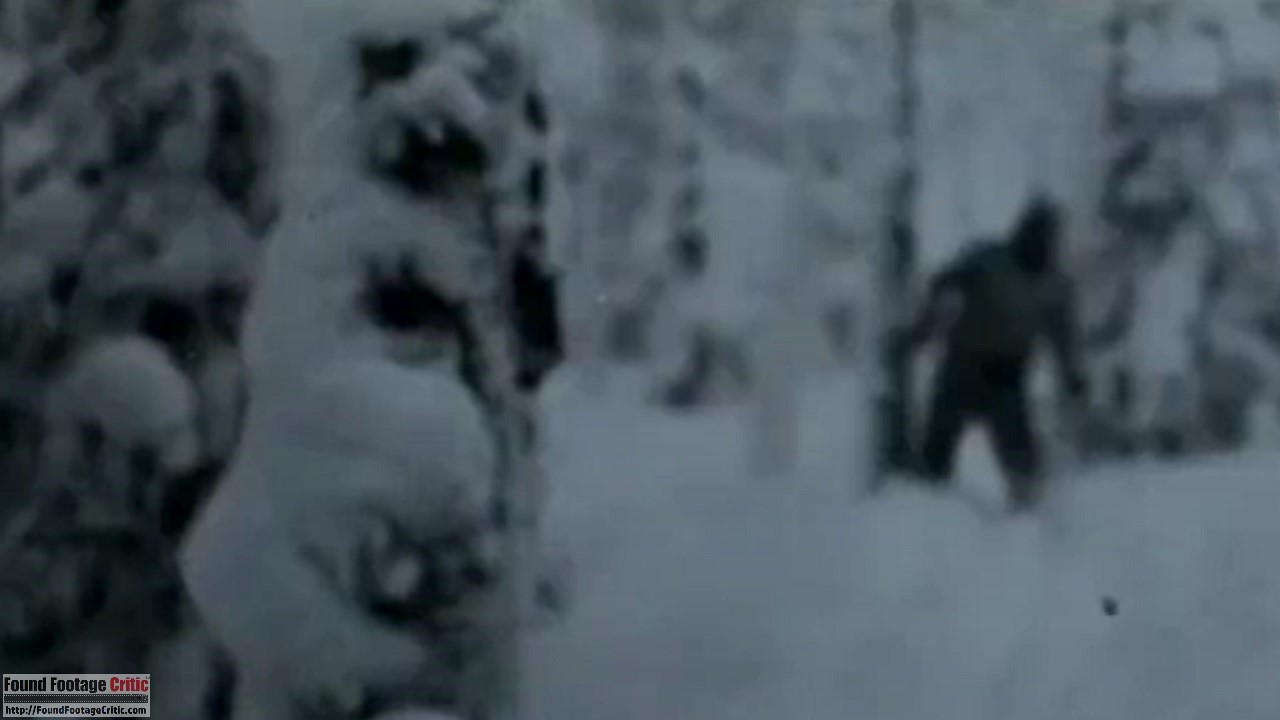
Gregory Burkart: Found Footage Proponent
FFC (MS): As a journalist, you’re one of the biggest advocates for found footage outside of the few sites dedicated to the genre.
Gregory Burkart: I try. Believe me, there have been so many dinner table arguments—being out here in the horror community of Hollywood—and having to defend a genre that I guess that if you’re a horror purist you’re supposed to look down your nose at as a cheat.
The same way they looked at slasher films back in the day—a cheap and easy way to get into feature filmmaking was to make a knockoff of Halloween (1978) or Friday the Thirteenth (1980), a body-count type of film. I happened to enjoy those two for what they were, and now it’s ironic that the classic horror nerds which include myself adore the old vintage slasher movies, but they shun found footage. It’s just another sort of red-headed stepchild genre that you’re supposed to shun.
In my opinion found footage is a narrative and cinematic conceit that like any you either do right or you do wrong. If you do it right, it would be a movie that I would enjoy and that added layer of pseudo-realism or that truthiness for lack of a better word—can give you that certain creepy feeling that breaks the fourth wall and involves you in the film a little bit more. I Don’t feel like I ever have to justify my enjoyment of that subgenre.
Gregory Burkart’s “Lesser-Known Found Footage Films” Series
Gregory Burkart: I speak out every few months and put out a list of found footage films that I happen to like and that may be overlooked or that people who are dismissive of them need to look at them as not only scary but they’re well told little stories. Every so often I like to bring out another batch and share them with the readers. In general that response has been very positive. It’s exciting to see that people were like thank goodness at least somebody speaks out for it.
I really have to give a lot of credit to your site and your podcast for pointing me towards some that I [hadn’t known]. I’d go right by a movie and not know what it was because you’re so inundated with titles on Netflix and Amazon and everywhere else. You pass it by and don’t realize that it might actually be something good because you can’t judge it by the artwork. I spend a lot of time on your site trying to figure out what’s the next sort of underground sleeper that might pop up and be a new favorite.
Is Found Footage in Blumhouse’s Future?
FFC (MS): Found Footage has been the bread and butter of Blumhouse for many years. What is Blumhouse’s thought of found footage today?
Gregory Burkart: It’s interesting. I think there’s some attempt to put some distance from [found footage] now as maybe it’s a genre that’s run its course. I don’t want to speak for Jason Blum, but I think he said that horror as a genre is still wide open and doesn’t ever go away, so to be dismissive of any one particular style of filmmaking is presumptuous. You should always give a creative filmmaker a chance to tell their story.
I think the general consensus among development people at Blumhouse is that they don’t immediately look at it and say “oh found footage! What do you got?” The attitude is probably like “oh, another found footage…” But that being said, [consider] some of our more successful films even just recently like The Visit (2015) for example. Who would have known that two elements that people are supposed to scoffing at, M. Night Shyamalan and the found footage subgenre, when combined suddenly is a major hit. It worked. It had a great twist. It was self-contained. It was a nice little compact movie and it did very well for everyone involved.
Blumhouse Tilt: Catering to Multi-Platform Releases
Gregory Burkart: Blumhouse Tilt is a more recent branch of the company that basically aims for different avenues of distribution for films that fall outside the realm of the first look deals that Blumhouse has with Universal, partnerships with FOX and WWE, and of course Paramount. With Paramount, the Paranormal Activity franchise has run its course, but those are obviously great big distribution mechanisms.
There needs to be avenues out there for people to be able to get a micro-budgeted movie onto Netflix, onto Amazon, onto Hulu, etc. So, [Blumhouse Tilt] is basically an aggregator for people. “My movie is perfectly valid and is well told a story as any, but I don’t have the kind of distribution muscle to get it on a thousand screens.” It’s not about theatrical anymore. Blumhouse Tilt stepped in to try to explore that territory which a lot of it is still uncharted.
Creep 2
Gregory Burkart: Creep (2014) was a really great film, and that was a very early if not the very first Blumhouse Tilt project. It was one of the first and it did really well. It’s got a cult following and there’s a sequel in the works.They finally started shooting it. I have it on good authority that they are still sticking with the found footage format.
FFC (DA): Thank goodness, I hate it when they switch it for the sequel
Gregory Burkart: They’re not going to do it like The Last Exorcism (2010) and flip it, as far as I know. Don’t hold me to that. That may just be the scuttlebutt right now, but that is my understanding.
Unfriended 2
Gregory Burkart: Unfriended 2 is almost certainly going to be in the same format. The general feedback that I’ve been hearing is that it was kind of a risk to be able to have a movie that played out in real time on one computer screen. And it really resonated with the audience, with its target audience at least. Only a couple of films really had tried that before, like The Den (2013), and this one just seemed to hit that mark. I think that it would be foolish if they didn’t stay on the same path. Obviously, they’re gonna have to level it up. They’re gonna have to do something new with the formula. But I can’t imagine them taking another tact on that then essentially doing the completely internalized single screen approach.
FFC (MS): Ratter (2015) is another recent film that was in a similar vein to The Den (2013) and Unfriended (2014).
Gregory Burkart: Even though Unfriended (2014) did well theatrically, those kinds of movies really feel to me extra creepy. I watched Unfriended (2014) on a laptop. If you really watch it in the dark on a laptop you sometimes forget that you’re watching a simulation and it’s not your screen. The screen of your computer is not the screen they’re interacting with.
FFC (DA): It really was kind of trippy to see it on my computer screen. There were a few times I had to move my mouse to do things around the movie and I went “wait”. . . it threw my brain for a loop.
Gregory Burkart: I just recently started using a touch screen for that, a Microsoft Surface, and so I made the mistake of touching it and it partially minimized the movie and I thought “wait a minute, what? The movie has now become a window on my [computer]” So, it really flipped my sense of reality for a second there.
The Future of Found Footage
FFC (DA): What is the next big thing in found footage?
Gregory Burkart: I’ve been having those kinds of conversations with people at the site, with my editor and with some people that we’ve been looking at that have their own production outfits whose work we’re interested in. Recently, Blumhouse television which has been at it for a while did their first project with YouTube Red, which is a holiday horror series called The 12 Deadly Days. It’s basically like the movie Trick or Treat (2007) except with a Christmas theme.
It’s really stylish. They had a decent operating budget for that and they brought in some really smart people. It’s really funny and they were smart to populate it with YouTube celebrities—people that if you don’t keep up with viral videos and follow some of the hot YouTube channels, a lot of people you would not know—but that’s not the audience for this show. I don’t know who a lot of those people are, because I might be a little bit too old but I still thought it was so damn funny. It was really well done.
YouTube, 3D, and VR. . . Oh My!
Gregory Burkart: There’s gonna be a push and I’m behind a lot of that push going forward next year. We acquired control of the Blumhouse free YouTube channel and we would like to relaunch it in 2017 and experiment with 3D and VR material.
You have to use other cues and other triggers to get people to go look at stuff. Sound comes into play a lot.
There is a project that I can’t really reveal too much about yet that involves a POV that is 360. You have to carefully script your action around the intent to drive the viewer to turn and look at specific things. You really have to be aware of what the eye the ear is going to focus on because you can have a killer or a monster or a ghost come up behind you. We’ve seen plenty of games that are triggered if you look at this particular trigger-point than this will jump out at you.
When you’re filming actors in a real location you can’t do that. You have to use other cues and other triggers to get people to go look at stuff. Sound comes into play a lot. There’s some really cool stuff we’re looking at—a serialized story that might be comparable to something like Marble Hornets (2009) where there’s a through-line and it involves a couple of central characters, but the linking device is actually a supernatural and/or alien presence which is the real point of view
At any given point the viewer can take on the point of view of the antagonist in the story. We’re gonna do a little bit of a pitch meeting in the coming weeks here to see how something like that could be done affordably. There are big budget VR shows like Invisible (2016) which is an awesome show, but it uses absolute state of the art cameras where you have twelve cameras stitched together to create that complete 360 environment and XYZ axes.
If you’ve got Twitter you could send the killer commands or feedback saying what room to go into or which hallway to turndown
Wherever you look everything is on film, and in our case we would have to work with something where the stitching software is bundled into the hardware itself and so you won’t get quite as deep and slick of a look. The idea is if you play it up to be like found footage then you can play to the limitations of the hardware. If it’s gonna look a little grainy or shaky then you play those things up.
You can also branch off and tell 2D stories that play in that same sandbox—the same writer’s universe that can tell backstories or you can see a story from three different characters’ point of views. It’s gonna be logistically difficult but I think the people I’ve been talking to are a lot more comfortable with playing around in that world. It freaks me the hell out. I don’t even know how you choreograph that stuff so carefully, but we’re gonna try.
I would like to make a fan-driven type of thing. You can produce these so quickly and easily and they’re little micro-episodes where they are only a couple of minutes a piece. You really could see a season play out in many different directions depending on what kind of fan feedback or viewer feedback you’ve got.
Blumhouse did a Periscope-based horror movie, Fifteen (2015)—an interactive horror movie. This was Halloween before last I think and it happened in real time. It was choreographed down to every precise movement. It was basically a slasher scenario—you watch on Periscope and if you’ve got Twitter you could send the killer commands or feedback saying what room to go into or which hallway to turndown. The killer is sort of issuing an ultimatum—if you don’t tell me I’m going to kill one person in this house. If you don’t answer this question correctly I’m going in here, or of you answer this question wrong I’m gonna go in there. All the actors and all the camera crew had to coordinate it, so they receive their cues based on what the messages were being tweeted to the killer/camera operator.
I did not even know how they pulled it off. You can see the finished product Fifteen (2015) on blumhouse.com. You can see the recorded version of that, but it did initially happen in real time.
I’m excited to see it happen. I know it’s gonna create a lot of challenges for filmmakers, but it also requires writers to open up their world a little bit and requires actors with top level improv skills to be able to just take a story and see it suddenly turn on a dime and adapt because you don’t even know how it’s going to end. You’re going to have to help end it. I think there might actually be some genuinely scary stuff that might actually creep me out which is really hard to do.
https://youtu.be/Q3vE0xkyl0g
Creepypasta Column and Video Series
Gregory Burkart: My focus in 2017 is going to be on the creepypasta theme. There are plenty of YouTube channels and podcasts where they would take creepypasta that’s doing well on Reddit and they will just read it and have stock music underneath that sounds kind of spooky and they might show a few still images and that’s it.
I’m hoping that my pseudo-journalistic approach to creepypasta could find it’s own audience.
I thought, why don’t we take the approach as if it were the Discovery Channel or History Channel or True Crime Channel and report on these as if they had been real events. That’s how I approach them in writing form.
I have a biweekly creepypasta column. I really enjoy writing that one because I try to approach it as if I’m not just regurgitating. I’ve been reading them since 2008 or 2009 obsessively. It’s impossible to put them down because they are flash fiction, micro-fiction. You can gobble them up quick and get a quick little short story jolt out of them or creepy feeling and then you just move on.
Click here to read Gregory Burkart’s Creepypasta articles on Blumhouse.com
A lot of the creepiest ones are where they have that urban legend quality where you can’t trace them back to a specific origin—you just kind of heard from somebody who heard from somebody else that if you watch these particular YouTube videos, it causes your brain to suddenly shut down or you start seeing images out of the corner of your eye, so don’t watch this video—so you know people will instantly go watch that video.
The idea of forbidden footage or haunted image or anything where somehow embedded in the code of the story is something paranormal—those are the ones that do the best and it’s fun to report on those as if they were real, because then your reporting can take on the angle that you’re being affected by what you’re writing about. Translating that to video is going to be challenging but I’m already starting. I’ve got a couple in the pipe already that are going to be taking off within the next couple of weeks–little two or three minute short films that we’ll put up on the site.
Creepypasta is obviously a wealthy mine of material and with the success of Channel Zero (2016) on Syfy these fictionalized stories play in the creepypasta sandbox—that’s one way of approaching it and that really doesn’t intrude on what I’m trying. I’m hoping that my pseudo-journalistic approach to creepypasta could find it’s own audience.
I’ve tested the waters and people have said that “yeah I’d be into something like that” so I’m hoping that it does find an audience, a good dedicated following so we could prove to the higher-ups that it’s got some legs to it.—creepypasta is a big thing now, really huge.
Looking to the Future
FFC (MS): Are there any other interesting projects at Blumhouse you would like to discuss?
Gregory Burkart: As far as stuff coming out of Blumhouse Tilt, I would say the one I’m most excited about is The Belko Experiment (2017)—it’s one to keep an eye out for. Writer James Gunn is going back to his Troma roots in a big way, but with a nice production gloss to it. Imagine the Troma level of outrageousness, but on a budget beyond Troma’s wildest dreams. The Belko Experiment (2017) is just off the hook. You’re not even gonna believe how crazy that movie is.
Get Out (2017) features the directorial debut of Jordan Peele. We had a sit-down with him and I already knew from Key and Peele (2012) some of the skits about The Shining (1980)—they are huge horror fans. I think Get Out (2017) is rethinking the genre in a major way and it’s really gonna shock a lot of people.
https://youtu.be/qZNfwayNLL0


